Retinoic peeling is a universal cosmetic procedure that can be used at any age (except for children), for both women and men. Unlike many other variations of peels, which are carried out by a qualified specialist and can be painful and traumatic for the delicate skin, retinol (yellow) does not require injections with anesthetic, because it does not cause discomfort to the patient.
What is retinoic peeling
Retinoic peeling is a cleansing and scrubbing cosmetic procedure that allows you to get rid of many dermatological problems. Thanks to its exfoliating properties, it effectively removes the stratum corneum and dead cells. After the manipulations, the face becomes cleaner, the risk of acne and inflammation is minimized, and the color of the dermis becomes uniform and healthy. It is also excellent as a skin care measure in the process of skin rejuvenation in adulthood for women and men.
Yellow peeling helps smooth out shallow wrinkles, remove age-related swelling (associated mainly with kidney problems), and also lighten (up to complete removal) pigmentation.
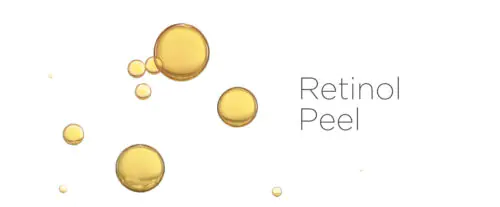
This procedure has found wide application in modern cosmetology. Its name speaks for itself. The formulation of the substance for retinoic peeling is based on retinoic acid, which has many beneficial properties:
- increases mitotic activity of cells;
- normalizes the production of melanin and has a gentle effect on age spots of any origin (age-related pigmentation and freckles, which can normally be present in a person of any age);
- activates and stimulates regeneration and production of new cells;
reduces the number of atypical dermal cells.
Properties of retinoic acid for skin
By its origin, retinoic acid is a derivative of vitamin A. It is an organic product of animal and plant origin, and can affect all cells of the body. Retinol exposure to the skin at the correct frequency does not have any traumatic effect.

On the contrary, their beneficial and gentle influence has the following benefits:
- slows down skin aging and all negative accompanying processes;
- improves and evens out the relief and texture of the skin (especially useful for those who struggle with post-acne, enlarged pores, wrinkles and shallow scars);
- brightens and makes the complexion even and healthy;
- removes toxins.
On average, the effect of one retinoic peeling procedure is observed within 3-4 months.
In addition to the long-term effect, it has the following advantages:
- safe and universal for use;
- short-term effect of adaptation and enhanced care after treatment;
- absence of serious contraindications;
- there is a low probability of complications and consequences, therefore peeling can be used at any time of the year, including in summer.
Indications for peeling
The main cosmetic indications for retinoic yellow peeling are the following dermatological problems:
- Slow process of natural collagen production;
- lack of the required amount of hyaluronic acid in the skin, dryness and tightness of the skin;
- the appearance of small and deep facial wrinkles;
- poor elasticity and reduced firmness of the dermis;
- uneven skin color or any other problem associated with skin whitening;
- increased pigmentation under the influence of ultraviolet radiation;
- acne;
- skin aging: age and photoaging;
- increased pigmentation;
- hyperkeratosis.
Contraindications
Retinol peeling, if necessary, can be used not only for the face, but also for the neck, chest and arms. However, despite its advantages, this procedure has a number of contraindications, in the presence of which it is better to refrain from carrying out manipulations:
- tendency to allergies. If the patient's skin is extremely sensitive to any external and internal influences, there is a high probability that the procedure may cause a negative response in the body. It is especially worth considering the fact that retinol, by its properties, causes increased reactivity of dermal cells;
- viral infections (mainly herpes and others that cause rashes), since under the influence of retinoids and acids it can enlarge the lesion or spread infection to uninfected and healthy areas of the skin;
- warts, because, as in the previous point, they can spread over the entire face;
- photosensitivity, which is due to the acid origin of the peeling. This means that it is better not to carry out the procedure for people whose skin reacts sensitively to any ultraviolet radiation (sun, solariums, etc.);
- taking medications. Most often, this contraindication applies to taking Roaccutane, since after completing the course of this drug, almost all types of peelings are not carried out for six months or longer;
- any liver diseases, including liver failure and hepatitis of all types;
- pregnancy, lactation, as well as planning to conceive in the coming year, since vitamin A is toxic to embryos and can cause complications with pregnancy, including miscarriages.
How to peel in the salon and at home

The general procedure consists of three main stages:
- Preparing for the procedure.
- Yellow peeling.
- Care after peeling.
Each stage requires serious consideration and implementation in strict accordance with the instructions of doctors and cosmetologists.
Professional retinoic peeling in the salon
It is advisable to carry out the retinoic peeling procedure in a salon setting. Only a qualified specialist will be able to accurately determine the areas and areas of the skin that need acid exposure and minimize the risk of skin injury. The peeling itself from start to finish looks like this:

- A mass is squeezed out from a tube with a mask that contains from 5% to 10% of retinolic acid.
- The product is applied to the desired areas, including the upper and lower eyelids, skirting the area where eyelashes and eyebrows grow. The mild effect of the drug allows it to be used even on the most sensitive areas.
- But if the mask contains components that have depigmenting properties, applying it to the eyelids is strictly prohibited.
- After this, you need to wait for the mask to harden. This happens after 15-20 minutes from the moment of application.
- As soon as the mask has completely thickened, it must be removed (methods for removing the product differ, since there is no single correct technology).
- The last stage is the use of special photoprotective agents to create a barrier against the negative effects of ultraviolet rays.
In standard cases, a course of retinoic peels lasts four procedures at different time intervals. After the first application, a pause of two weeks is taken, and subsequent ones are carried out at intervals of 1 month.
Retinoic peeling at home
The preparation stage involves a serious medical examination, which includes an in-depth diagnosis followed by a general history. The skin is examined by a dermatologist, after which he consults with the patient about the feasibility and safety of the procedure.
The first visit to the doctor consists of an external examination of the dermis to determine the type of skin, its current condition (scars and scars, pigmentation, inflammation, diseases, elastosis), as well as detection of signs of photoaging.
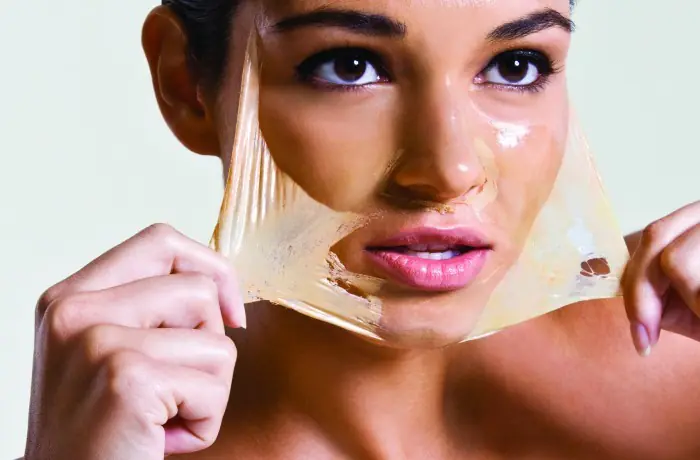
Particular attention should be paid to the patient’s past medical experience, namely, whether he has previously taken medications containing retinol, what effect (positive and negative) they had on the body’s condition, whether they caused allergies, and how easily they were tolerated. If an allergic reaction does occur, then there is a possibility that retinol peeling will increase the reactivity of the cells, and the procedure will not give the expected effect.
However, this is not an absolute contraindication for the procedure, but only indicates the need to change the mechanism of action according to the gradual principle, carrying out peelings with a reduced amount of retinolic acid and an overall reduced time of manipulation.
A qualified cosmetologist should also check with (female) patients about plans for pregnancy, since, as already indicated early on, retinol has a temporary negative effect on reproductive function, especially on the fetus. In addition, when studying the anamnesis, it is necessary to pay attention to the presence (in the present or past) of viral infections, hepatitis and liver diseases.
For normal skin type without any special cosmetic or dermatological problems, the preparation procedure takes only two weeks. But dark skin or problematic dermis needs careful pre-peeling adaptation for a period of half a month or more. The process of home care itself consists of moderate use of drugs and products containing ANAs. This is necessary to weaken the intercellular connections so that the stratum corneum of the skin comes off easier, faster and less painfully during subsequent interventions.

The best effect can be achieved with the advance use of cosmetics based on retinoids with a mass fraction of 0.025%. To prevent the formation of pigmentation after exposure to acids, it is advisable to additionally apply special tyrannosis-inhibiting products to the area of application. You can purchase them in specialized stores or pharmacies.
Many cosmetologists also advise the use of hepatoprotective agents orally before, during and after the procedure, such as:

- ornithine;
- ademeteonine;
- phospholipids;
- methionine;
- thioctic acid.
Another important stage that will confirm the cosmetologist’s qualifications is the signing of information awareness and an agreement to carry out the procedure. This will help avoid misunderstandings and conflict situations regarding the main nuances of cosmetic surgery.
Peeling mass with retinoids can be purchased at pharmacies or specialty stores. This is necessary for carrying out the procedure at home. The ideal option would be the pharmaceutical product Differin.
Step-by-step recipe for retinoic peeling
The mask itself is sold ready-made, but you can prepare the mixture yourself at home. It is prepared according to the following recipe:
- 3 ml of clean distilled cool water;
- 3 ml of pharmaceutical retinoic acid 20%.
The mixing order is also important. Acid must be added to WATER, and not vice versa. It is strictly forbidden to use any metal utensils for cooking. It is better to give preference to products made of ceramics or plastic. Hands must be protected with cellophane gloves, and the mixture must be applied with a special cosmetic brush.
How to make retinoic peeling at home
The retinol peeling procedure at home is carried out as follows:
- Using a cosmetic brush, apply the resulting mixture to the face in an even layer, avoiding the area of the eyelids and under the eyes.
- The product must be left overnight until it dries completely.
- In the morning, acid peeling is washed off with plenty of water. To achieve complete removal of the drug, it is additionally recommended to wipe the entire face and hard-to-reach areas (wings of the nose, corners of the mouth) with makeup remover liquid.
- The final manipulations are external protection of the skin. To do this, you will need a special post-peeling cream or its equivalent - Rosa Moschetta oil. After it is completely absorbed (this takes about half an hour), a product with an SPF factor is applied to the skin.
- When removing mass from the face, it is important to make sure that it does not remain on the skin, and only then apply skincare cosmetics.
Care after retinoic peeling, peeling after the procedure
The following symptoms are normal after yellow peeling:

- dryness;
- tightness;
- photosensitivity;
- peeling;
- redness.
In order not to cause serious harm to the dermis, the following measures must be taken in the first week after the procedure:
- Drink plenty of water regularly.
- Protect your skin from exposure to ultraviolet radiation, and apply sunscreen before going outside.
- Relieve swelling with anti-inflammatory and regenerating cosmetic products with panthenol and herbal ingredients.
- During the period of maximum peeling (day 3-4), use masks with lactic acid and cranberry.
A procedure performed in a salon will cost much more than a home peel. On average, the price of a master ranges from 4 to 10 thousand, depending on the region. You will also need to spend money on post-peeling care. Clients who regularly do yellow peeling note that after use, the skin becomes smooth and velvety, has an even color, wrinkles are smoothed out, the skin is cleansed, and the pores are significantly narrowed. The procedure is also indicated for skin problems of various types, with the exception of viral infections.
Aesthetics supports a person’s sense of beauty. This applies to everything! And, of course, the human body. Some people are given the maximum by nature, others - less. Preserving and sharpening this is a task that is solved with the help of plastic surgery or corrective procedures, with the help of cosmetics, etc.
Among the variety of remedies, the procedure called yellow peeling stands out somewhat. Why yellow, and what is peeling? Let's figure it out.
What is retinoic (yellow) peeling?
A necessary condition for maintaining youthful skin is its cleansing. Why? When we remove dead cells, the skin begins to “breathe”, the process of its restoration begins: cells are renewed, metabolism is normalized, necessary substances are produced, etc. At home, we use special products and scrubs for cleansing, but sometimes this is not enough. Such products are suitable for young skin if there are no other problems.
What to do when there are problems? In this case, deep cleansing is required. Peeling is a deep cleansing of the skin. Cosmetologists perform this procedure.
Retinoic peeling, or also called yellow peeling, is one of the most effective. The video below will tell you about it:
Concept and essence
Retinoic peeling belongs to the category of superficial peelings. Retinoic acid is used to formulate the peeling mixture. It is the main active component. Retinoic acid is vitamin A-acetic acid, similar in molecular structure to retinol, which gives a noticeable exfoliating effect. It is called yellow because of its color.
Vitamin A has a beneficial effect on the dermis. In this case, not only external use is justified, but also internal use, then the effect is enhanced. The product is very powerful and can cleanse at a deep level. In some cases, retinoic acid is replaced with retinol acid, i.e. vitamin A in active form. It will be the same yellow peeling, but somewhat weaker. The main property of retinoic (retinolic) acid is its beneficial effect on the immune system of the skin and blood circulation in tissues.
Photos before and after retinoic peeling
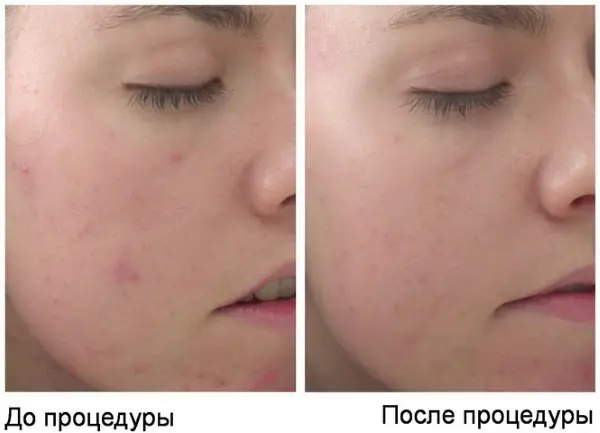
Types of procedure
- Retinoic peeling. Powerful deep cleansing, long-lasting recovery. Suitable for cases where the skin is thick and rough. It is most often used after 30 years,
- Retinol peeling. Deep but gentle cleansing. There is no peeling stage, short recovery time. This type of peeling is suitable for any skin type.
Comparison with similar techniques
What distinguishes it from similar procedures is that retinoic peeling has fewer contraindications and side effects. A competently carried out procedure helps to cope with serious skin problems without surgery, injections, etc. Anesthesia is not required for it. If we compare the results of retinoic peeling and mesotherapy, the first method is often not inferior to the second in terms of effectiveness, bypassing the painful stage of the procedure itself and the rehabilitation period. The same applies to lifting.
Indications
Various defects are indications for retinoic peeling. But the most important of them are:
After peeling, the skin is cleansed as much as possible, which promotes its renewal. The procedure is available to women and men.
Contraindications
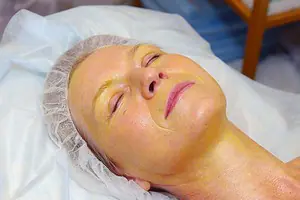
Retinoic peeling is not for everyone. A number of contraindications are small but strict:
- Yellow peeling is strictly contraindicated for pregnant and lactating women, as it causes irreversible consequences during pregnancy, which leads to pathology of the fetus, leading to deformities, etc. This is important to consider when planning pregnancy, since peeling is permissible at least 6 months before conception child,
- It is contraindicated for those undergoing radiation therapy,
- Allergy to the components of the composition is a serious contraindication,
- The presence of herpes and other fungal or viral skin diseases,
- Antibacterial therapy,
- Large acne,
- Demodicosis,
- Fresh tan.
Carrying out
In the cabin
It is preferable to carry out the procedure in a salon. It will be somewhat more expensive, but safer. Retinoic peeling is one of the chemical peels that require strict control and extreme care. The procedure involves preparation, which is an unconditional condition, otherwise there will be no desired result. This item is discussed at the initial consultation.
If it is impossible to carry out the preparation, which requires financial expenses, you will most likely be denied peeling. One procedure is usually sufficient. But it is permissible to carry out 2 - 3 procedures with an interval of 1 month (according to indications). It is recommended to repeat it after 6-12 months in cases where the skin is unable to produce collagen on its own.
Preparation
Preparation begins 3 weeks before the event. Key preparation points:
- Using retinoic ointment or skinoren gel according to the instructions,
- Carrying out 2 - 3 superficial peelings with fruit acids,
- Use only special care cosmetics that contain low concentrations of fruit acids.
Neglecting these preparation measures entails the risk of side effects and does not give the desired result from the retinoic peel itself.
Algorithm
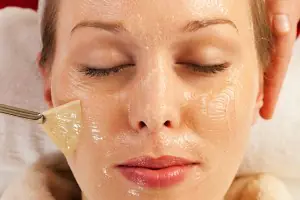
The entire procedure takes about 3 hours in total. It starts with cleansing the skin.
- Cleansing. The skin is washed with warm water and dried, and a special cleansing composition containing salicylic and glycolic acids is applied.
- Applying the peeling mixture. Prepare the composition of the mixture in advance. The main component is retinoic or retinolic acid, the auxiliary component is ascorbic or phytic acid. The concentration is calculated individually in each case. Apply the solution with a special spatula, without touching the area of the eyelids and eyebrows. A uniform and dense layer of the solution hardens in about 20 - 30 minutes.
- After hardening, the peeling is removed like a film.
- Apply a nutritional composition (gel, balm). It should have an increased sun protection factor.
In some cases, repeated application of the solution is required, which depends on the individual characteristics of the skin and the degree of its damage. Different drugs require different application times, from 1 hour or more.
At home
Is it permissible to carry out the procedure at home? Yes, but you should know all the nuances of its implementation. When deciding to peel yourself, you should consult a cosmetologist and then strictly follow his instructions and recommendations. The algorithm for doing peeling at home is identical to doing it in a salon or clinic. An important condition: do not perform the procedure alone; someone must monitor the condition of the skin besides you in order to change the peeling layer in time.
Before carrying out the procedure at home, it is necessary to check the reaction to the components of the mixture. To do this, the solution is applied to the elbow area. If severe redness and itching are not observed, then you can use a peeling solution.
The video demonstrates the retinoic peeling procedure based on retinoic acid (vitamin A) for mature skin:
Rehabilitation
During the first day, swelling appears and increases. It is especially noticeable in the eyelid area.
Signs of skin renewal will appear on day 3:
To reduce swelling, cosmetologists sometimes prescribe hormonal ointments, but their use is unjustified, since hormones inhibit cell division, which disrupts the functioning of the immune system. The use of hormonal drugs can lead to complications: thinning of the skin, development or worsening of infection. It is advisable to use products with regenerating properties: panthenol, bepanthen, etc. Moisturizing creams and enzyme masks help well.
Rules for the rehabilitation period:
- Refusal from baths, swimming pools, solariums,
- Reduced physical activity
- After two weeks (not earlier) it is recommended to do mechanical cleaning.
The first two weeks the skin will be white, but later melanin begins to be produced, which is responsible for pigmentation. After the next two weeks, the skin will acquire a natural color. You will see the first result of the procedure in a month, the final result in 4 months.
Possible complications
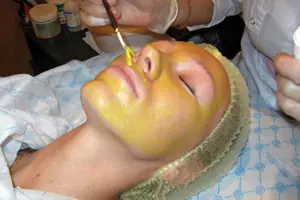
Complications arise due to an overdose or an allergic reaction of the body. Vitamin A has the ability to accumulate in the body. Overdose is possible in cases where external use is combined with oral administration of the vitamin. This can lead to complications:
- Temperature increase,
- Severe itching and profuse rashes,
- Severe erythema (redness), turning into dermatitis,
- Severe skin sensitivity
- Recurrence of acne
- Contact lens intolerance and dry lips,
- Decreased protective functions of the skin,
- Hyperpigmentation.
Price
Peeling is performed in large cities and on the periphery. The average cost of retinoic peeling in capital cities ranges from 5,000 to 10,000 rubles. Much depends on the original drug. The pricing policy of a particular clinic plays a big role.
However, this is the price of the peeling itself. The cost of the entire procedure, including preparation and rehabilitation period, will be significantly higher. It all depends on the cost of the funds you choose.
Reviews
Reviews are 50/50: as many positive as there are negative. They talk about the painfulness of the procedure and its low effectiveness. However, positive reviews tell of amazing possibilities. Often the person himself is the cause of a negative result. When performing retinoic peeling, accuracy and precision are important. The importance of preparation for the procedure is also mentioned.
If you violate even one point, don’t expect any results. Moreover, there will be complications. The role of the specialist who performs the peeling is just as important. The fidelity of the selected composition and high-quality execution depend on it. If everyone followed the established rules, there would be more positive reviews. Should the method itself be blamed?
The girl in the video below will talk about how she did this peeling:
Retinoic peeling is suitable for both old and young, women and men. Every person often thinks about the beauty of his face. Everyone in their apartment has at least one mirror, and when almost every person gets up in the morning, the first thing they do is look into it to see their reflection. Many in our age of speed and high technology often decide to change their appearance, naturally pursuing the goal of exclusively improving their appearance, turning to plastic surgery to qualitatively change their face. Basically, plastic surgeons make morphological changes in appearance, which at the end of the operation makes the patient happy or saddens him, not meeting his expectations. Not everyone decides to undergo surgery.
Human skin
Each face is an individual business card of a person at any age. The facial skin is the most sensitive to the environment, vulnerable to infections, and more often than other parts of the body undergo degeneration and a change in the outer layers of the epidermis.
The skin of the face is the oiliest part of the human skin. It is here that the work of the sebaceous and sweat glands is most pronounced due to the fact that the face is always the most open part of the body. Caring for it must be special. There are many products and salon treatments, such as retinol peeling, thanks to which the dead cells of the skin tissue are exfoliated, the natural color of the skin is restored, the pores are narrowed, and the secretory secretions from the sebaceous glands are reduced.
The area from the bridge of the nose to the nasolabial fold is called the “triangle of death” in surgery, which in itself should warn a person against being careless with his face, especially in this area. Here is the most vulnerable skin, the most vital organs connected directly to the brain.
Existing types of peeling
Peeling is not a simple cleansing of the facial skin, which can easily be done at home with the help of scrubs, but a procedure that is performed by specialists in professional salons.
There are several types of peeling depending on the degree of impact on the skin:
Superficial peeling is recommended for people with minor facial skin problems, for example, too enlarged pores, increased activity of the sebaceous glands, acne. Staying in the environment of megacities with increased air pollution, drinking poor quality drinking water, and lack of vitamins and microelements make the body weakened and easily vulnerable, which immediately affects the skin. Acne can be triggered by inflammatory processes that occur in women in the ovaries, and in men in the prostate gland and testicles, so the fight against problematic acne on the face must begin with the diagnosis and treatment of the reproductive system.
In general, superficial peeling is good as a weekly procedure to exfoliate dead cells and moisturize the skin, which will allow you to feel the “breathing” of the skin and give freshness to your face.
Medium peeling is more suitable for middle-aged people; it allows you to smooth out wrinkles and acne cavities. The effect occurs on the second layer of the dermis, dissolving the outer one. This procedure should only be performed by specialists so as not to harm the blood vessels of the face.
Deep peeling involves correction of the pores of the dermis; various types of masks are used that affect micropores and blood vessels.
Deep facial peeling is not recommended before age 30.
But there are many ways to influence the skin using peeling, here are the most common of them:
- fruit;
- ultrasonic;
- physical;
- chemical;
- laser;
- mechanical;
- diamond;
- silicic;
- clay;
- salty.
Retinoic facial peeling
Retinoic peeling is a unique facial skin cleansing procedure. It is ideal for skin of all age groups. It can be carried out both at a young age and in old age. Retinoic peeling has a surprising advantage over others: it is painless and does not require the administration of painkillers, which are sometimes used for various types of peeling. Retinoic peeling effectively solves the problem of aging skin; its application area is wide: face, neck, hands, décolleté. The name retinoic peeling speaks for itself - it uses retinoic acid.
Yellow peeling is a procedure for mature skin. Age of possible clients: from 35 to 50 years. For those who have not yet reached the age of 35, retinoic peeling will be useful only if there are serious defects on the skin.
Indications for retinoic peeling may vary, but the most important of them are skin aging, age spots, small scars and the effects of acne.
Retinoic peeling is carried out in the same way as regular peeling, which will result in effective cleansing of the facial skin from dead cells, stimulation of the rapid growth of new skin, which, due to its “youth”, will give the face a fresh look and healthy coloring. Retinoic peeling has a beneficial effect on the human immune system, qualitatively rejuvenates the skin, and improves blood circulation in the areas of the body involved in peeling.
Retinoic peeling procedure
Retinoic peeling is based on the use of retinoic acid containing isotretinoin, which is why the peeling is called retinoic. There is also retinol peeling, which is carried out using retinolic acid, which basically contains the active form of vitamin A, which gives the acid its most yellow tint. Therefore, in some beauty salons it is customary to call this type of procedure retinol yellow peeling. Both types are classified as yellow peels.
Many cosmetologists avoid retinoic peeling because the skin restoration process is much longer than after retinol peeling. All this suggests that it is advisable to carry out such types of peeling under the supervision of a specialist, but the cost of such a service in a beauty salon can be very high, so some people decide to carry out yellow peeling at home. Before you decide to peel yourself, you need to consult with a cosmetologist and strictly follow all his instructions at home. It is advisable not to carry out retinoic peeling alone; someone at home should monitor the client in order to detect redness of the skin in time and change the layer of the peeling mixture.
So, retinoic yellow facial peeling is carried out in beauty salons by cosmetologists. The entire procedure takes about three hours.
First, the skin is washed with warm water, the remaining water is removed with a dry cloth, then a composition with salicylic and glycolic acids is applied to cleanse the skin before the peeling itself.
After exposure to these acids, a peeling composition is applied, which is prepared by a cosmetologist from retinoic or retinolic acid and some auxiliary acids, for example, ascorbic, phytic. If the skin begins to rapidly turn red, the composition is immediately washed off with warm water and a facial skin care product is applied, for example, some nourishing cream or gel.
The acid concentration and duration of the procedure are calculated strictly individually for each client, depending on the behavior of the skin.
Retinol peeling reminds many clients of a regular facial mask; the peeling composition is applied with a wide spatula, without affecting the eyelids and areas of hair growth, eyebrows and eyelashes. The layer should be uniform and quite dense. Within 20-30 minutes, the mask hardens, hardens a little, after which it is easy to remove like a film. Skin cleansed after peeling must be lubricated with a balm or gel with an increased sun protection factor.
The retinol composition can be applied several times, it all depends on the degree of skin damage and how it responds to these acids.
Approximately on the third day after peeling, signs of peeling effects on the skin may be observed, which should not greatly frighten the client, but he should be warned about this, for example:
- peeling of the skin in areas affected by peeling;
- formation of pinkish areas;
- skin tightness;
- dry skin;
- mild pain;
- increased skin sensitivity;
- mild itching;
- slight swelling.
All these signs are natural against the background of a change in the skin and the emergence of a young dermis.
Contraindications for this peeling
As with all procedures that involve chemicals, retinoic and retinol peels have their contraindications. Firstly, it should not be planned less than a couple of weeks before some important event, since the restoration processes of the skin do not proceed so quickly and traces of a recent procedure will be visible on the face, which can confuse any person.
Result of retinoic peeling: before and after the procedure
The retinol type of peeling is not advisable for people undergoing radiation therapy, as well as for those who have contraindications to the use of various medications, for example, Aspirin, Analgin, Detralex.
Retinol peeling is prohibited for people suffering from herpes virus infection with frequent lesions on the nasolabial folds, those who have warts on the body, large acne, as well as pregnant and lactating women. In any case, in order to avoid negative consequences, it is necessary to consult a specialist who will explain in great detail all the indications and contraindications for this procedure.



